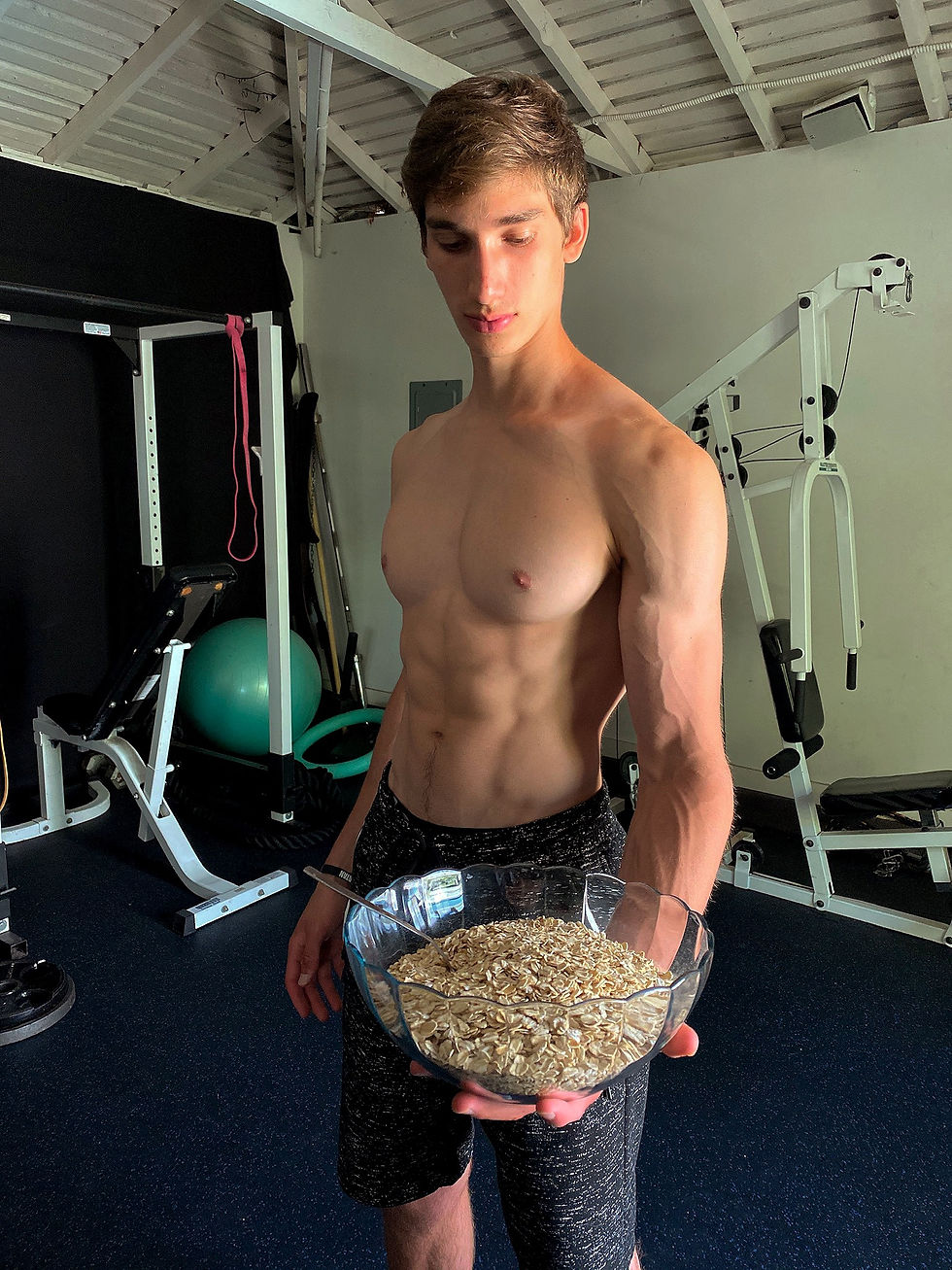How To Eat Lots Of Food And Still Lose Weight
- Jason

- Dec 18, 2020
- 4 min read
Updated: Oct 11, 2021
I have always been a fan of eating lots of food. It is much more satiating physically because of what happens in our bodies when we eat lots of food which I will explain later on, and mentally to know that I just ate a huge bowl of food that was the same amount of calories as a small bag of trail mix. In general when we think of a low calorie diet we think less food. In this article I will explain why that is not always the case.
What Is The Point Of Eating For Volume?
The whole point of eating for volume is to maximize the amount of food you can eat, while keeping your caloric intake as low as possible. I find this method very effective because the stomach can only hold so much food at a time. Therefore if you focus on eating foods lower in calories yet still high in volume there will be less space in your stomach for caloric dense foods. This method will help you feel much more full even though you ate the same amount of calories as seen in this photo below. Also a very helpful tip I like to tell my clients when their goal is to lose weight is to drink a glass of water before each meal. This will also make your stomach feel somewhat full causing you to eat less food.

Many Other Benefits Of Eating For Volume Include:
Volume foods are nutrient dense meaning you will get much more vitamins and minerals which will improve exercise performance, sleep, energy levels, brain function, and overall health.
They provide lots of fiber leading to better digestive health and fullness.
Most foods higher in volume contain lots of water which will keep you more hydrated.
As mentioned earlier it is also more satisfying mentally to know that you just ate a huge plate of food while consuming a very low amount of calories.
Why I Believe Many Diets Tend To Fail
The reason why certain diets tend to fail is because of hunger. If you do not feel satisfied after eating your meal you are most likely going to get more food. If you do that consistently you will no longer be in a caloric deficit, meaning you will not lose any more weight.
What Foods Should I Eat When Eating For Volume?
Foods higher in fiber tend to have more bulk, while being more filling and lower in calories. Try to eat more vegetables and fruits if you want to add volume to your plate because they contain lots of fiber and are lower in calories.
Lean sources of protein with very little fat are also great high-volume foods. As a bonus, protein is the most satiating macronutrient and has a high thermic effect which means that eating protein will satisfy your hunger better than eating carbs or fat will, and protein takes more energy to metabolize. This increase in energy expenditure can help you better maintain an energy deficit to lose body fat.
Here is a list of some of my favorite high volume low calorie foods:
Vegetables: (calories per cup)
Spinach 7 cal
Romaine Lettuce 8 cal
Mushrooms 15 cal
Celery 16 cal
Cucumber 16 cal
Pickles 16 cal
Zucchini 20 cal
Eggplant 20 cal
Cabbage 20 cal
Bell Peppers 25 cal
Cauliflower 27 cal
Asparagus 27 cal
Sauerkraut 27 cal
Broccoli 31 cal
tomato 32 cal
Brussel Sprouts 38 cal
Carrots 50 cal
Onion 64 cal
Fruits and Berries: (calories per cup)
Watermelon 46 cal
Cantaloupe 54 cal
Apples 57 cal
Strawberries 50 cal
Honeydew 61 cal
Grapes 62 cal
Blackberries 62 cal
Raspberries 65 cal
Peach 65 cal
Grapefruit 74 cal
Pineapple 83 cal
Blueberries 85 cal
Orange 85 cal
Carbohydrates: (calories per cup)
Air Popped Popcorn 31 cal
Butternut Squash 63 cal
Pumpkin Puree 80 cal
Diced Potato 118 cal
Rolled Oats (cooked in water) 145 cal
Protein: (calories per 100 grams)
Egg Whites 52 cal
Nonfat Greek Yogurt 59 cal
Nonfat Cottage Cheese 72 cal
Tofu 80 cal
Tilapia 96 cal
99% Lean Ground Turkey 115 cal
Canned Tuna (In Water) 116 cal
Boneless Skinless Chicken Breast 165 cal
How I Like To Incorporate These Foods Into My Diet
Make big salads using lots of veggies and top it off with lean protein.
Cook with vegetable broth instead of oil.
Make stir fry's using vegetable broth instead of oil, lots of veggies and lean protein.
Make soups using lots of broth, some veggies and lean protein.
Add more water than usual to your oatmeal because the oats will soak all of it up giving you more food to eat. You can also add greek yogurt and fruit for even more volume. (I personally like adding protein powder and pumpkin puree for more volume.)
Food Swaps and low Calorie Food Substitutes
1 cup Cooked Brown Rice 216 cal substitute with 1 cup Cauliflower Rice 25 cal.
One 12 inch Whole Wheat Tortilla 300 cal substitute with a Lettuce Wrap 10 cal.
1 cup Cooked Pasta 220 cal substitute with 1 cup Zucchini Noodles 20 cal.
1 tbsp Olive Oil 120 cal substitute with 1 tbsp Vegetable Broth 1 cal.
1 cup Potato Chips 140 cal substitute with 1 cup Air Popped Popcorn 31 cal.
1 cup Mixed Nuts 813 cal substitute with 1 cup Mixed Berries 70 cal.
1 cup Full Fat Greek Yogurt 200 cal substitute with 1 cup Nonfat Greek Yogurt 59 cal
1 cup Whole Milk 150 cal substitute with 1 cup Unsweetened Almond Milk 30 cal
1 cup Granola Cereal 500 cal substitute with 1 cup Rolled Oats (cooked in water) 145 cal.
1 cup Sweet Potato Mashed 250 cal substitute with 1 cup Pumpkin Puree 80 cal or 1 cup Butternut Squash 63 cal .



Comments